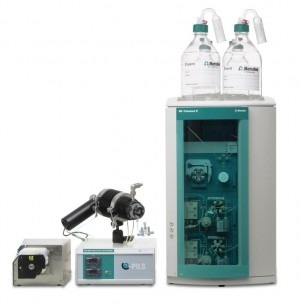
Dr Anna Williamson discusses the use of the Particle-Into-Liquid-Sampler (PILS) system from Metrohm for air monitoring.
According to Williamson, air pollution is a serious global problem.
Some pollutants, including dust, pollen and soil particles, occur naturally, but most air pollution is caused by human activity, such as industry, traffic and domestic heating.
Many people suffer from illnesses caused by air pollution, such as heart problems, asthma and lung cancer.
The effects of air pollution are carefully monitored.
Once a pollutant is released into the air, it is impossible to control; this is because wind speeds can transport it anywhere in the world.
The Intergovernmental Panel on Climate Change (IPCC) is a scientific intergovernmental body tasked to evaluate the risk of climate change caused by human activity.
Air pollution controls are in force.
The UK, along with other member states, must meet a European directive on standards in air quality and limiting harmful airborne particles.
Failure to meet this directive results in court action.
The PILS can measure particulate pollutants several times an hour and, when used in combination with a Metrohm ion-chromatography system, inorganic ions such as ammonium, nitrate, sulphate and chloride can be detected and quantified with a cycle time between five and 20 minutes, depending upon the application.
The PILS system uses small quantities of steam to form water droplets on individual aerosol particles.
The water droplets containing the dissolved aerosols can then be captured and analysed by ion chromatography.
The instrument can be operated unattended for up to 20 days depending upon the volume of reagents and the size of denuder and can take samples every five minutes.
The current method used for analysing airborne particulates is filter sampling.
The filters collect the aerosol particles - usually over a 24-hour period - and the results are reported as daily averages.
The PILS system from Metrohm is said to be an effective way of producing real-time measurements for assessing air quality.
High time resolution means that more information can be gathered and trends and cycles can be observed.
Applications where the PILS system can be used include: indoor air-quality monitoring; ambient air-quality monitoring; tunnel monitoring; waste-transfer and landfill-site monitoring; stack-emissions monitoring; and emission protection for employees.
Metrohm offers a direct online onsite analysis using established techniques; no manual sample preparation is needed.
In combination with an ion chromatograph, it is possible to determine the following species: cations (Na+, NH4+, K+, Ca2+ and Mg2+); anions (Cl-, NO3-, NO2- and SO42-); organic acids (acetate, formate and oxalate); and LOD, depending on the ion ~5-100ng/m3 (250mL loop).





